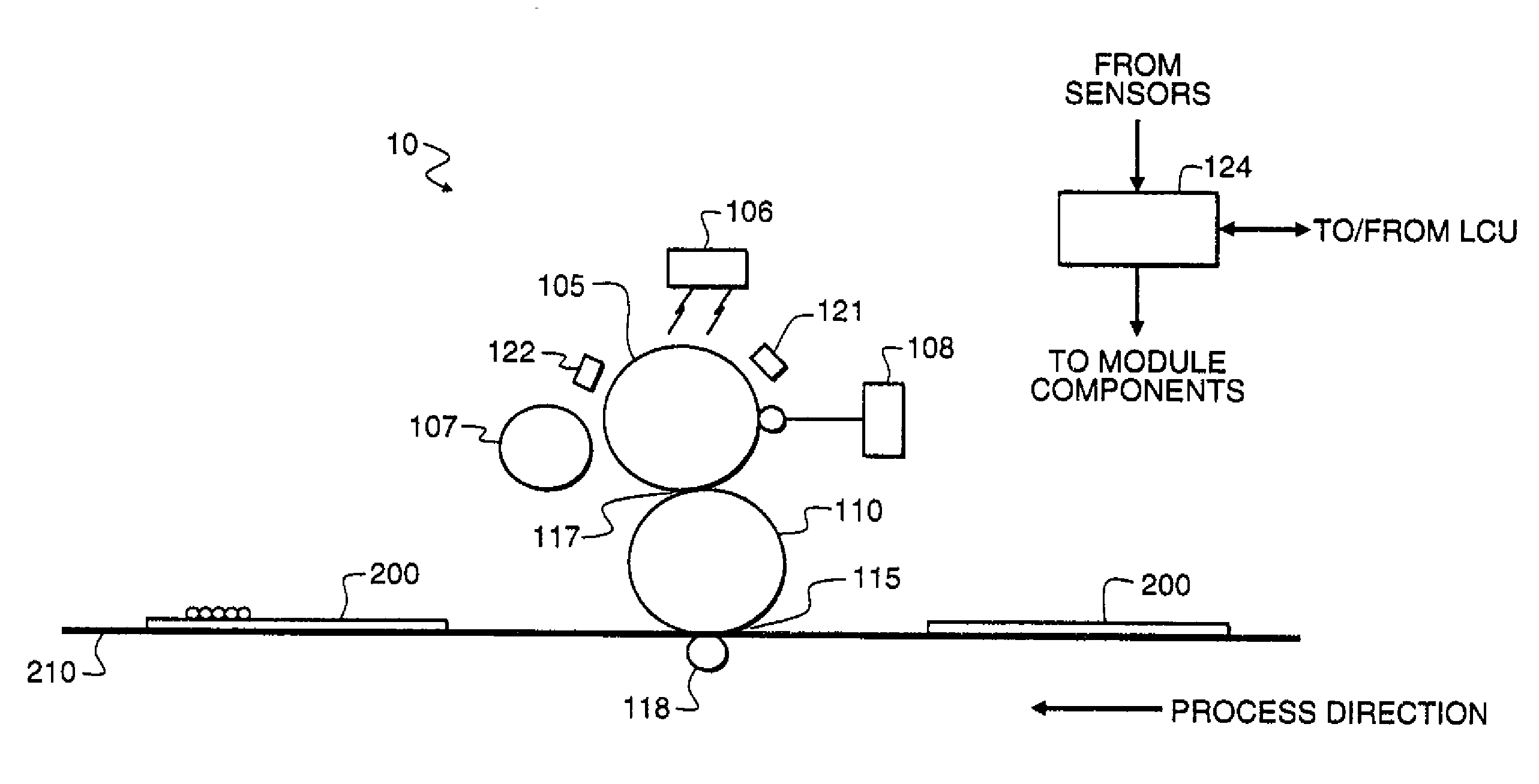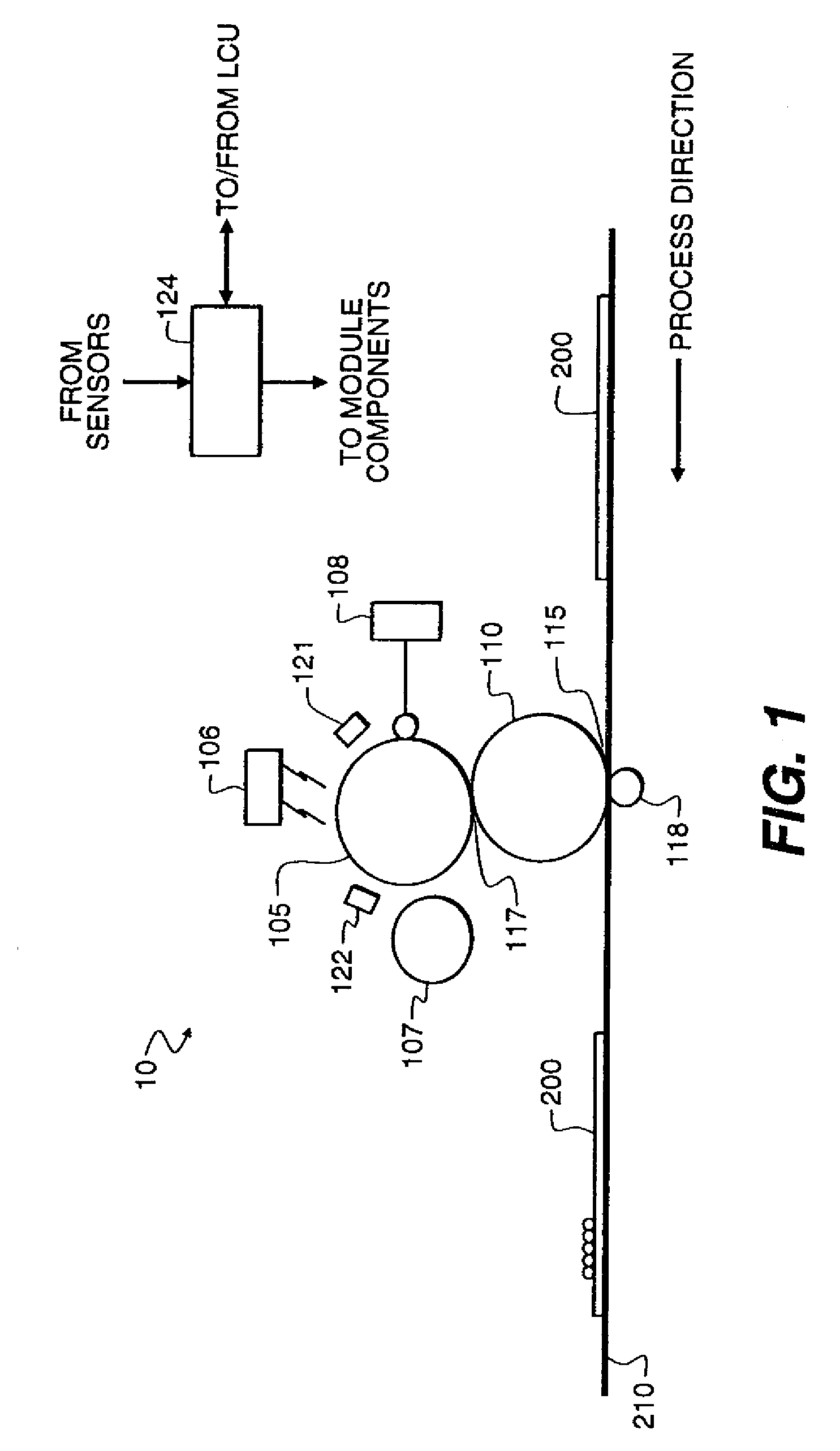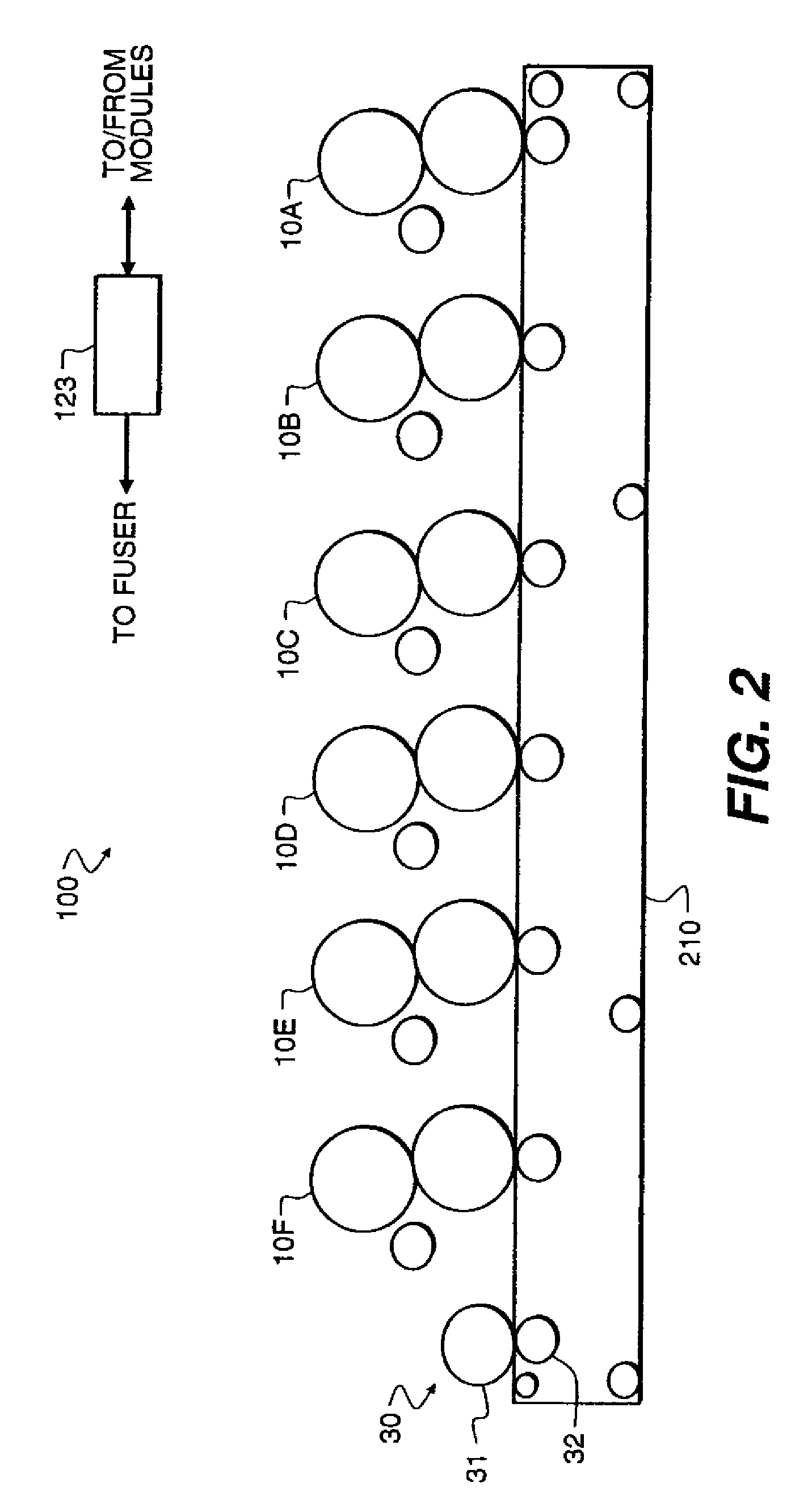Enhanced fusing of raised toner using electrography
a technology of electrography and toner, applied in the field of raised printing, can solve the problems of significantly reducing manufacturing yield, significant manufacturing challenges and costs, and achieve the effects of reducing equipment energy requirements and costs, and slowing down the process speed of the fuser
- Summary
- Abstract
- Description
- Claims
- Application Information
AI Technical Summary
Benefits of technology
Problems solved by technology
Method used
Image
Examples
Embodiment Construction
[0014]Referring now to the accompanying drawings, FIGS. 1 and 2 schematically illustrate an electrographic printer engine according to embodiments of the current invention. Although the illustrated embodiment of the invention involves an electrographic apparatus employing six image producing print modules arranged therein for printing onto individual receiver members, the invention can be employed with either fewer or more than six modules. The invention may be practiced with other types of electrographic modules.
[0015]The electrographic printer engine 100 has a series of electrographic printing modules 10A, 10B, 10C, 10D, 10E, and 10F. As discussed below, each of the printing modules forms an electrostatic image, employs a developer having a carrier and toner particles to develop the electrostatic image, and transfers a developed image to a receiver member 200. Where the toner particles of the developer are pigmented, the toner particles are also referred to as “marking particles.”...
PUM
 Login to View More
Login to View More Abstract
Description
Claims
Application Information
 Login to View More
Login to View More - R&D
- Intellectual Property
- Life Sciences
- Materials
- Tech Scout
- Unparalleled Data Quality
- Higher Quality Content
- 60% Fewer Hallucinations
Browse by: Latest US Patents, China's latest patents, Technical Efficacy Thesaurus, Application Domain, Technology Topic, Popular Technical Reports.
© 2025 PatSnap. All rights reserved.Legal|Privacy policy|Modern Slavery Act Transparency Statement|Sitemap|About US| Contact US: help@patsnap.com



